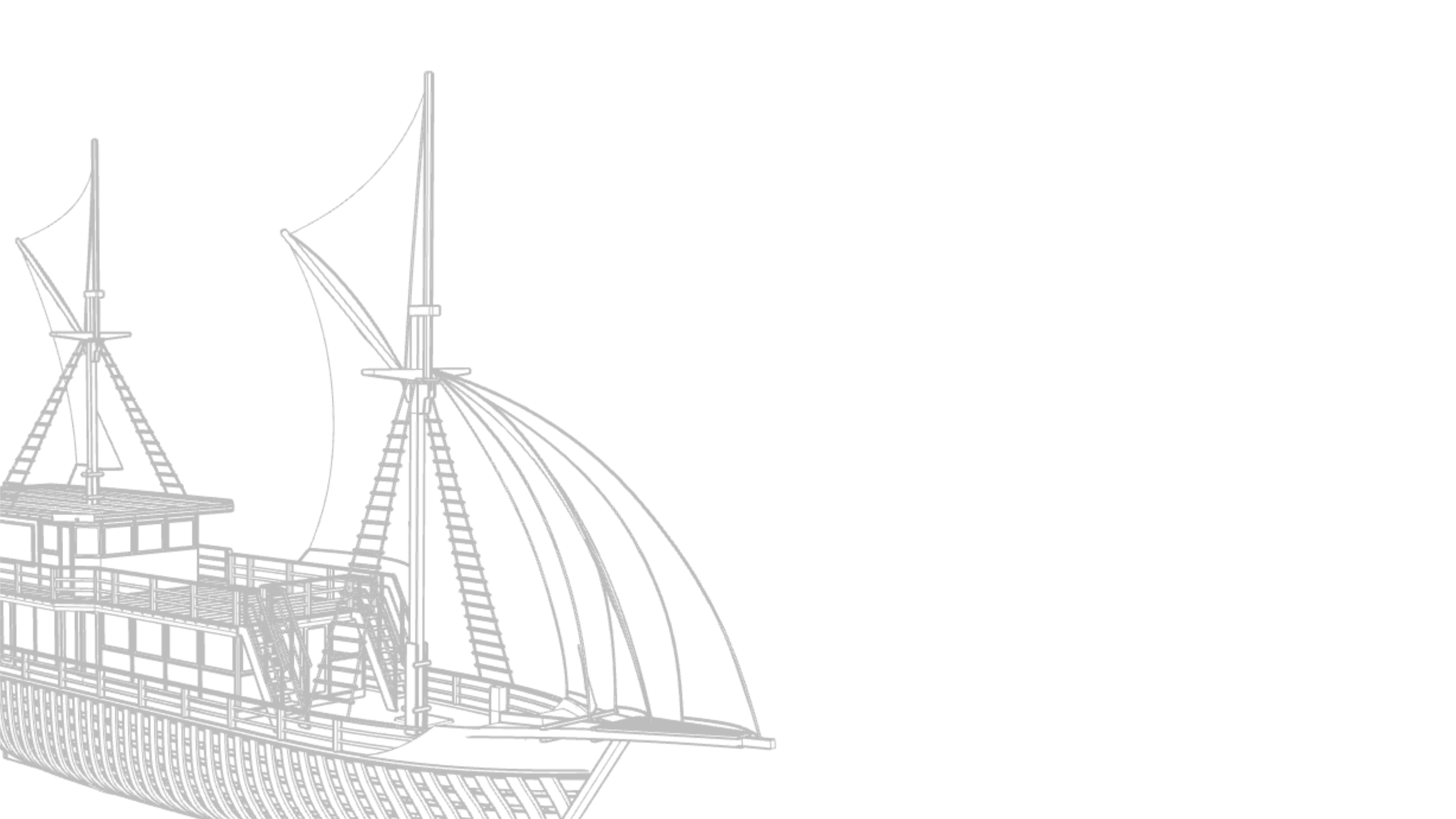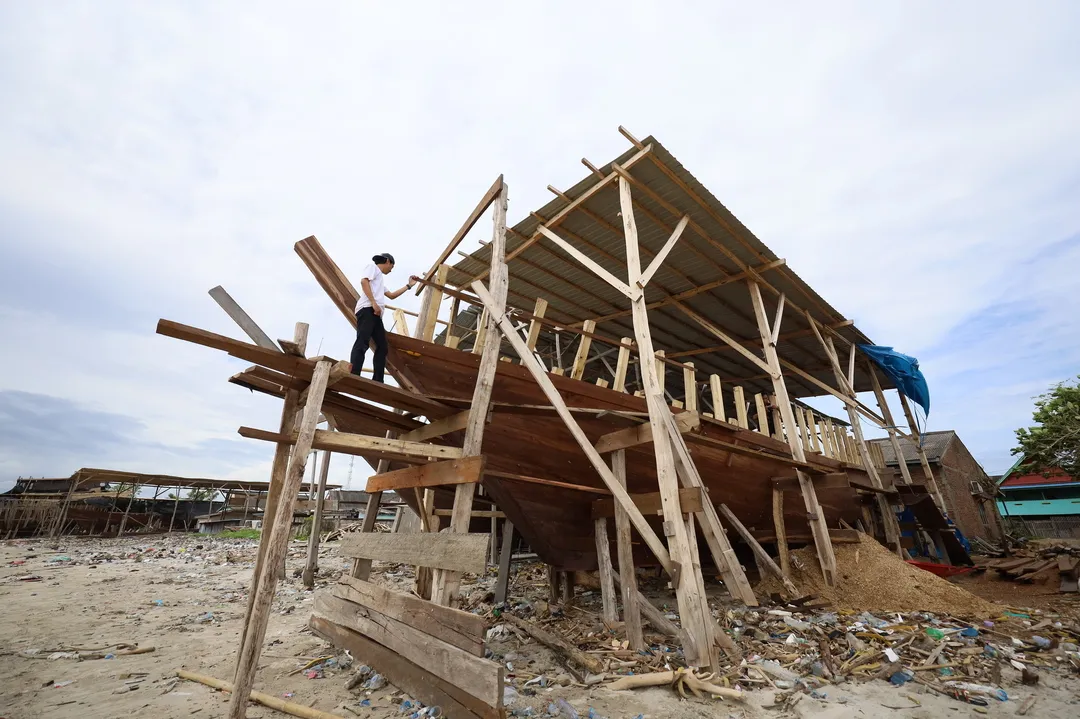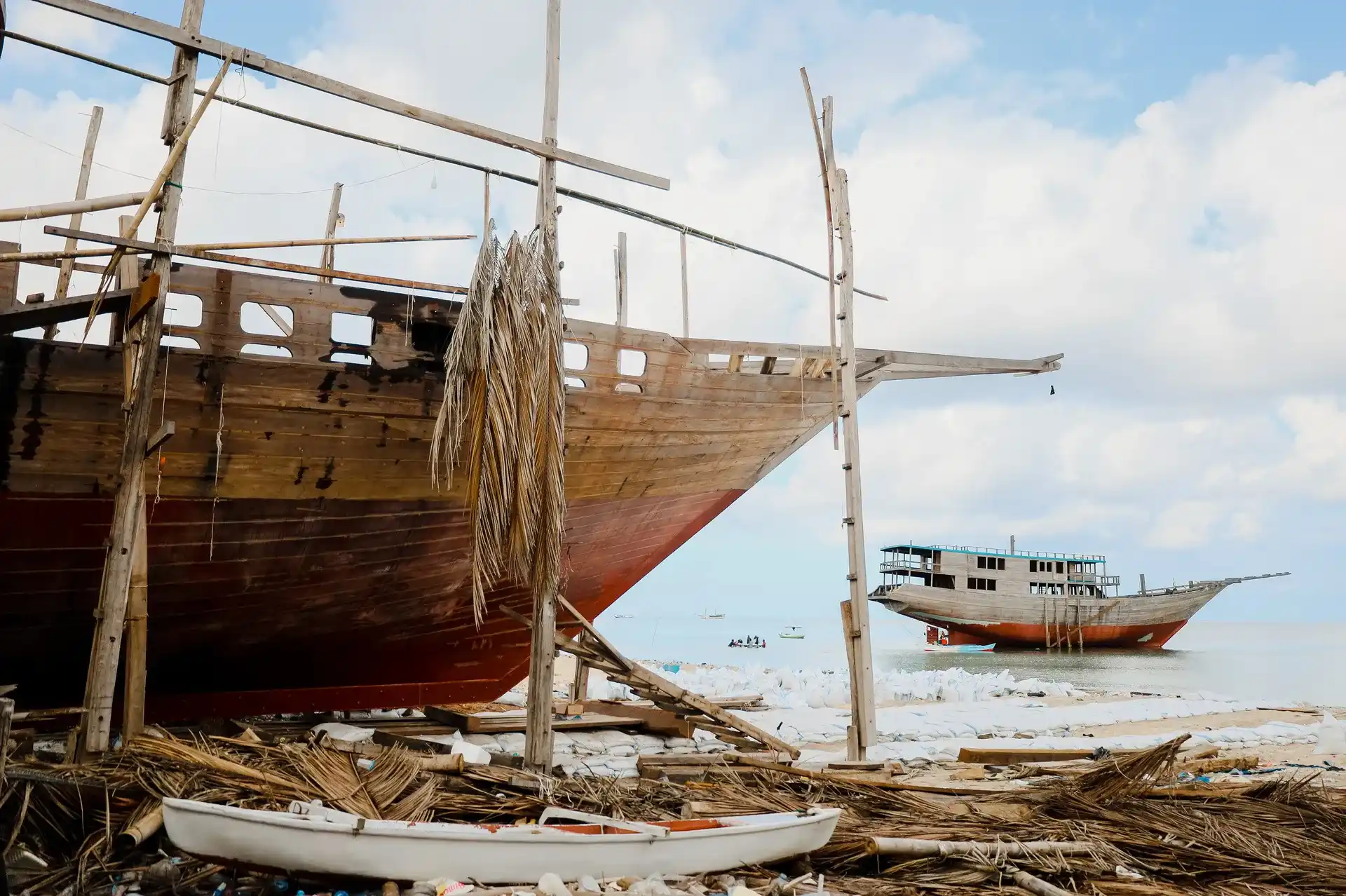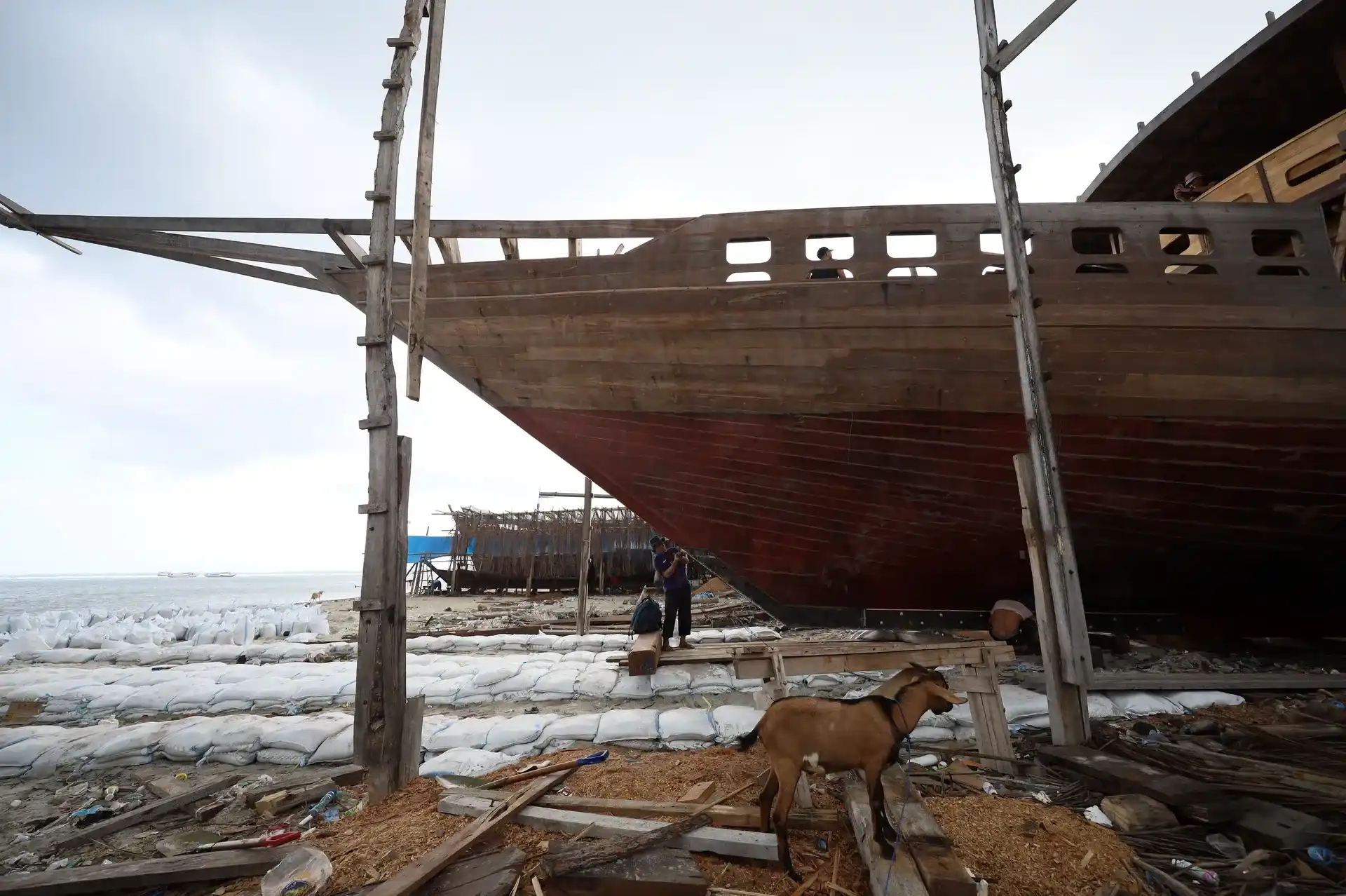Exploring the Traditional Boats of the Bugis People: Craft, Culture, Legacy
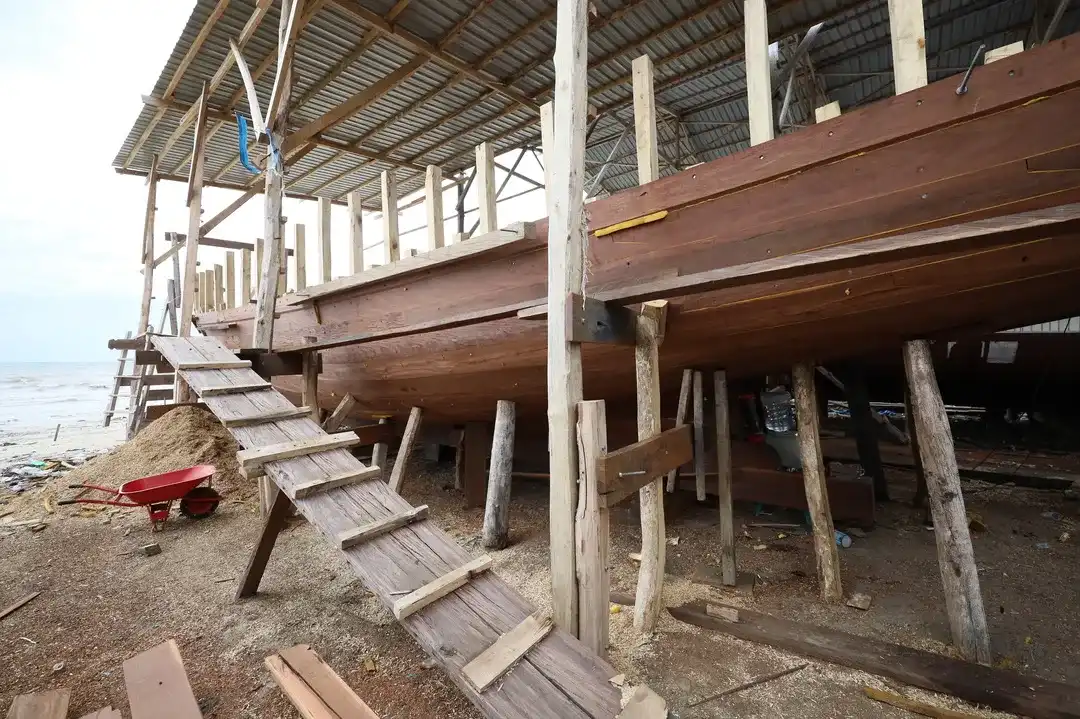
The traditional boats of the Bugis people represent generations of skilled craftsmanship, nautical ingenuity, and deep-rooted community values. Originating from South Sulawesi, the Bugis are renowned seafarers whose existence has always been closely tied to the ocean. Every vessel they create carries both practical purpose and cultural meaning.
Let’s explore these remarkable vessels—and the stories they continue to carry across the waves.
Read Also: 5 Powerful Lessons Voyagers Can Learn from the Kajang Tribe in Indonesia
Who Are The Bugis People in Indonesia?
The Bugis people are an ethnic group native to South Sulawesi, Indonesia, primarily settled along the coastal regions of the province. With access to strategic maritime routes, their communities flourished as early as the 7th century.
Historically, the Bugis are known not only as skilled fishermen but also as fearless traders and master navigators who sailed across the Indonesian archipelago and beyond—even reaching northern Australia and Madagascar.
Their seafaring legacy is deeply embedded in their identity, supported by:
- A tradition of long-distance maritime trade involving spices, textiles, and forest products.
- Navigational expertise passed down through generations without formal maps.
- A strong cultural code called Siri’ na Pacce, emphasizing honor, dignity, and social cohesion—including at sea.
This rich maritime culture is what gave rise to their iconic traditional boats.
Why Do Boats Define Their Culture?
For the Bugis people, boats are more than just vessels—they are living representations of their culture, history, and values.
As coastal dwellers and maritime pioneers, the Bugis have long relied on the sea for survival, trade, and social mobility.
Their traditional boats serve as both tools of livelihood and symbols of identity, anchoring their community's connection to nature, the cosmos, and their ancestors.
Boats define Bugis culture because:
- They represent freedom and resilience, enabling migration, trade, and exploration.
- Each vessel is a cultural artifact, handcrafted with rituals, carvings, and oral knowledge.
- They act as mobile homes, often crewed by extended families, strengthening kinship ties.
- Spiritual beliefs are embedded in boatbuilding, with ceremonies marking each construction phase.
In essence, the Bugis relationship with their boats mirrors their way of life—rooted in the sea, shaped by tradition, and steered by communal values.
Read Also: Live Like a Bajau Sea Nomads: A Cultural Ocean Journey
4 Traditional Boats of Bugis People
The traditional boats of the Bugis people reflect their deep-rooted connection to the sea and mastery of wooden shipbuilding. These boats are not just tools, but carriers of ancestral stories and identity.
Let’s dive into four of the most iconic Bugis vessels and discover what makes each one unique.
1. Phinisi (Pinisi) – The Pride of Bugis Sailors
The Phinisi is the most internationally renowned traditional sailing boat of the Bugis and Makassar people.
- It features two tall masts and seven sails, often associated with maritime symbolism—seven seas, seven Bugis virtues, or other local interpretations.
- Traditionally built by hand in Tana Beru and Bira, it requires no blueprint—just generations of oral knowledge and spiritual guidance.
- Originally used for long-distance trade, especially during the spice trade era, the Phinisi could transport large cargo across the Indonesian archipelago and even to northern Australia.
- Today, modern Phinisi vessels are often used for tourism, diving charters, and cultural cruises, particularly in places like Komodo and Raja Ampat.
2. Lepa – The Nomadic Boat Home
The Lepa is traditionally associated with the Bajo (or Bajau) people, but also used by some Bugis coastal communities.
- These boats are slimmer and more portable than the Phinisi, often functioning as both home and vessel for sea nomads.
- A Lepa boat has a small shelter (palau) on deck, which protects its inhabitants from sun and rain.
- Built primarily for inshore fishing and short-distance sea travel, Lepa boats are highly maneuverable in shallow waters.
- The annual Festival Lepa in Sabah (Malaysia) celebrates this maritime tradition with elaborately decorated boats, underlining its cultural value.
3. Patorani – The Traditional Fishing Fleet
The Patorani is a classic Bugis fishing boat, especially popular in Makassar and along the southern Sulawesi coast.
- Characterized by its sloop-rigged sail, with a single mast and triangular sail, the Patorani is designed for speed and agility in coastal waters.
- Traditionally used to catch flying fish (ikan torani), it has also been adapted for catching other marine species.
- The boat is often built with a flat-bottomed hull, allowing it to glide easily in shallow waters and return swiftly to shore.
- It plays a crucial role in sustaining local food systems and community livelihoods to this day.
4. Palari / Makkunarai – The Phinisi’s Ancestral Form
The Palari (also known as Makkunarai) is the original hull design that inspired the modern Phinisi.
- It has a rounded stern and is generally smaller than today’s schooner-style Phinisi, making it ideal for earlier forms of sea trade and inter-island travel.
- Before the adoption of sails and rigging influenced by Western designs, Palari boats were often rowed or fitted with simpler sails.
- Despite being less common today, some traditional builders still refer to Palari when constructing authentic-style Bugis boats or teaching apprentices.
- The name Makkunarai refers to the boatbuilders themselves—a title of deep respect in Bugis communities.
Read Also: Bugis Sea Nomads: Legendary Sailors, Traders, and Navigators
How Are Traditional Bugis Boats Built?
Traditional Bugis boats are not just constructed—they are crafted through generations of lived knowledge and spiritual practice. Built entirely by hand, these vessels reflect both functional design and cultural soul.
- No blueprints used – Builders rely on oral tradition, experience, and intuition to shape every part of the boat.
- Natural materials – Durable woods like ironwood and teak form the core structure, shaped using manual tools such as adzes, chisels, and saws.
- Sacred rituals – Every build begins with a keel blessing and ends with launch ceremonies, involving offerings and taboos to honor ancestral spirits and the sea.
Each step honors tradition—where craft meets culture.
Where Voyagers Can Experience Bugis Boats in Person?
The best place to witness the legacy of Bugis boatbuilding alive today is Riara Marine in Tana Beru, Bulukumba—a working shipyard where tradition meets craft.
- Watch real Bugis boats being built by hand using centuries-old techniques.
- Learn directly from master builders who carry the oral knowledge of generations.
- Try your hand at boat construction—from carving wood to observing sacred rituals.
These aren’t museum pieces—they are living vessels of culture, still sailing today. Visit Riara Marine for a Boat Construction Workshop.
Book your experience now and step into maritime heritage.
